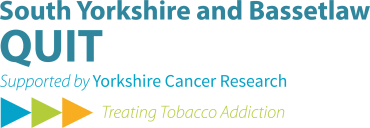The Ottawa Model for Smoking Cessation
Data from Canada has demonstrated that comprehensive secondary care treatment programmes for tobacco addiction deliver immediate and highly significant reductions in admission rates and mortality.
The Ottawa Model of Smoking Cessation (OMSC) tested the effectiveness of a hospital-initiated smoking cessation programme across 14 hospitals in Canada. The core components of this model were: the systematic identification and documentation of all smokers admitted to hospital, the systematic administration of pharmacotherapy & behavioural support to active smokers in hospital and the systematic attachment to long term community follow-up services after discharge, with printed recommendations for continuing pharmacotherapies post-discharge.
The community follow-up consisted of an automated telephone service providing 8 telephone calls over 6 months with access to counselling from smoking cessation nurse specialists in the event of relapse or low confidence. Outcomes were compared between 641 control smokers admitted to the 14 hospitals prior to the OMSC implementation and 726 intervention smokers admitted after the OMSC implementation. The control group received ‘usual care’ which typically consisted of a self-help brochure and very brief advice.
The Ottawa Study found :
- An 11.1 percentage point increase (from 18.3% to 29.4%) in long-term quit rates among general patient population.[1]
- 35% of the patients who received the OMSC were smoke-free at 6-months, compared to only 20% of the usual care participants.[2]
- Patients who received the OMSC were 50% less likely to be re-admitted to the hospital for any cause, and 30% less likely to visit an emergency department within 30 days;
- Smokers who received the OMSC were 21% less likely to be re-hospitalized and 9% less likely to visit an emergency department over 2 years;
- Most importantly, smokers who received the OMSC had a 40% reduction in risk of death over 2 years.
If South Yorkshire and Bassetlaw has the same outcomes as seen in Ottawa then we could within a year:
- Save 2,000 lives
- Prevent 2,000 30 day readmissions
- Prevent 4,000 readmissions overall
- Help 5,000 patients to quit at 6 month
- Save £7.1m from acute Trust readmissions within a year
The table below breaks this down by Clinical Commissioning Group.
|
Anticipated outcomes in South Yorkshire and Bassetlaw if the Ottawa outcomes are replicated in our patients who have an admission in an Acute Trust by Clinical Commissioning Group.
|
|
|
Reduction by CCG
|
|
|
Barnsley
|
Bassetlaw
|
Doncaster
|
Rotherham
|
Sheffield
|
Total
|
|
Estimated number SYB spells who are smokers (1)*
|
7,081
|
2,666
|
8,412
|
6,385
|
13,310
|
37,853
|
|
Mortality at 1 year
|
425
|
160
|
505
|
383
|
799
|
2,271
|
|
Mortality at 2 years
|
510
|
192
|
606
|
460
|
958
|
2,725
|
|
Readmission at 30 days
|
439
|
165
|
522
|
396
|
825
|
2,347
|
|
Readmission at 1 year
|
828
|
312
|
984
|
747
|
1,557
|
4,429
|
|
Quit rates at 6 months
|
1,062
|
400
|
1,262
|
958
|
1,996
|
5,678
|
|
ED attendances
|
319
|
120
|
379
|
287
|
599
|
1,703
|
|
Saving on readmission costs at one year (2)
|
£1,327k
|
£500k
|
£1,578k
|
£1,998k
|
£2,496k
|
£7.1m
|
|
Saving on ED costs at 30 days
|
£51k
|
£19k
|
£61k
|
£46k
|
£956k
|
£273k
|
|
Total Savings from admissions within a year ED within 30 days (gross)
|
£1.4m
|
£519k
|
£1.6m
|
£1.2m
|
£2.6m
|
£7.4m
|
[1] Reid RD, Mullen KA, Slovinec D’Angelo ME, Aitken DA, Papadakis S, Haley PM, et al. Smoking cessation for hospitalized smokers: an evaluation of the “Ottawa Model”. Nicotine Tob Res. 2010;12(1):11-8.
[2] Mullen KA, Manuel DG, Hawken SJ, et al. Tob Control Published Online First: 2016. doi:10.1136/tobaccocontrol- 2015-052728
(1)* Assumes 20% of spells are smokers, excludes day cases and maternity, aged over 15 years
The CURE project
The first six months of data from Wythenshawe Hospital in Greater Manchester, which has recently implemented an Ottawa like model (branded the CURE project) demonstrates that the model can be embedded quickly within UK acute trust hospital setting and with impressive results (see figure below).
1 in 4 of all smokers admitted to Whythenshaw hospital had quit at 4 weeks
| Outcomes: 6 Months of CURE at Wythenshawe Hospital |
2393 SMOKERS
Admitted to Wythenshawe
|
96%
2308
Provided with
brief advice by
admitting team
|
52%
1224
Prescribed with
NRT by admitting
team
|
61%
1450
have had a
specialist
assessment with
CURE team
|
10%
Smokers
prescribed
varenicline as an
inpatient
|
824
CURE team have provided 824 medication
prescriptions/changes
|
QUIT RATE: 42%
at 4 weeks in those patients supported by
the CURE team
|
At the 12 week follow-up (therefore covering the first 3 months of CURE) 332
patients had stopped smoking since their hospital admission |
Further information about the Cure Programme can be found on their website:
thecureproject.co.uk
